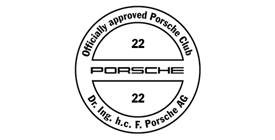You should upgrade or use an alternative browser.
Mythbusters...
- Thread starter sawood12
- Start date
robwright
New member
You only had to ask...........[ORIGINAL: sawood12
I'm certainly surprised at the reference to the use of Nitrogen in tyres in aircraft as I thought it was for a totally different purpose:
poprock
New member
sawood12
New member
ORIGINAL: tscaptain
You only had to ask...........[ORIGINAL: sawood12
I'm certainly surprised at the reference to the use of Nitrogen in tyres in aircraft as I thought it was for a totally different purpose:] A wheel fire, a possibility especially after a high speed rejected take off, does not need oxygen in air filled tyres to help it along! Aircraft tyres are inflated to pressures up to 200psi [&:]
You're right, but the risk is not for those circumstances - it is due to the fuel tanks being ruptured and the close proximity of the wheels, i.e. nestled with the wings fuel tanks therefore surrounded on all sides bar one by fuel. If there was a fuel leak at high altitude you want to reduce the risk of it catching fire at altitude, or if there was a crash and maybe belly landing which may rupture the fuel tank.
What on earth is the Lexus article going on about? Who goes around sucking tyre valves? [&:]
A fuel leak will be into the air so a bit of air in the tyres won't make a lot of difference. A crash and you've got bigger problems on your hands and similarly a belly landing.[&:]ORIGINAL: sawood12
You're right, but the risk is not for those circumstances - it is due to the fuel tanks being ruptured and the close proximity of the wheels, i.e. nestled with the wings fuel tanks therefore surrounded on all sides bar one by fuel. If there was a fuel leak at high altitude you want to reduce the risk of it catching fire at altitude, or if there was a crash and maybe belly landing which may rupture the fuel tank.
If the fuel tanks are ruptured it will only be a problem if the brakes are hot or, a la Concorde, it feeds the engines. I always thought N2 is used in a/c tyres for two main reasons 1) It's inert in the case of fire and 2) Next to no water content - which at -56C in the cruise is an issue! There is another issue which is heatsoak from the brakes. Aircraft brakes can generate some impressive amounts of heat which will transfer through to the tyres over time. Commercial aircraft have brake cooling charts to show how much time is needed between landing and taking off again depending on how hard the brakes were used. Significant amounts of water vapour in the tyre would affect the pressure and at close to 200psi you don't need any more
Posts made and opinions expressed are those of the individual forum members
Use of the Forum is subject to the Terms and Conditions
Disclaimer
The opinions expressed on this site are not necessarily those of the Club, who shall have no liability in respect of them or the accuracy of the content. The Club assumes no responsibility for any effects arising from errors or omissions.
Porsche Club Great Britain gives no warranties, guarantees or assurances and makes no representations or recommendations regarding any goods or services advertised on this site. It is the responsibility of visitors to satisfy themselves that goods and/or services supplied by any advertiser are bona fide and in no instance can the Porsche Club Great Britain be held responsible.
When responding to advertisements please ensure that you satisfy yourself of any applicable call charges on numbers not prefixed by usual "landline" STD Codes. Information can be obtained from the operator or the white pages. Before giving out ANY information regarding cars, or any other items for sale, please satisfy yourself that any potential purchaser is bona fide.
Directors of the Board of Porsche Club GB, Club Office Staff, Register Secretaries and Regional Organisers are often requested by Club members to provide information on matters connected with their cars and other matters referred to in the Club Rules. Such information, advice and assistance provided by such persons is given in good faith and is based on the personal experience and knowledge of the individual concerned.
Neither Porsche Club GB, nor any of the aforementioned, shall be under any liability in respect of any such information, advice or assistance given to members. Members are advised to consult qualified specialists for information, advice and assistance on matters connected with their cars at all times.








